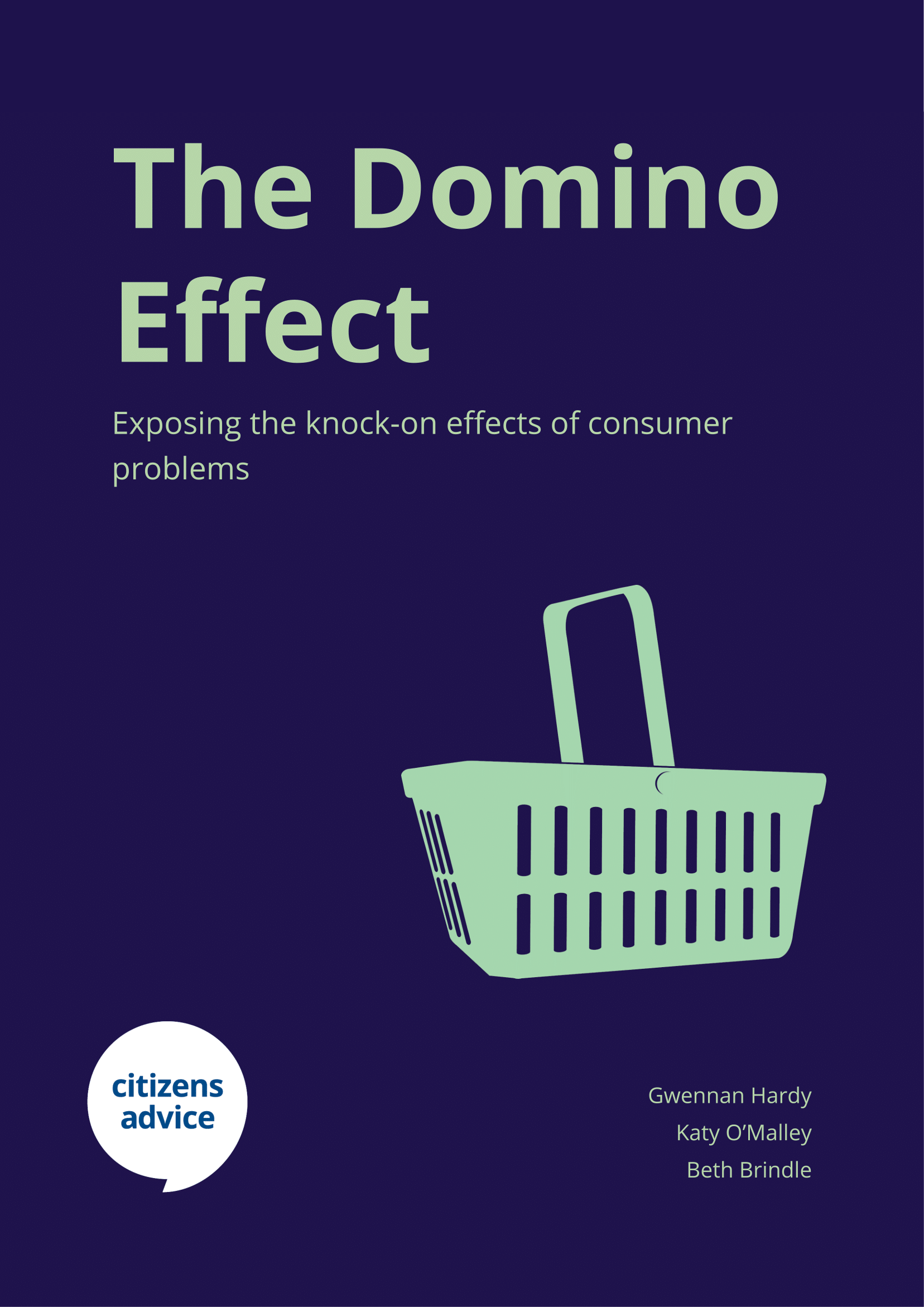The domino effect: exposing the knock-on effects of consumer problems
|
Building on our previous work, 'The domino effect' [ 1.4 mb] examines the knock-on effects of consumer problems - indirect and unintended consequences which cause harm in many aspects of people’s lives. Our research found that among people who experience consumer problems:
Problems in essential markets - primarily energy, water, and telecoms - are most likely to have knock-on effects. And while consumer problems affect us all, vulnerable consumers are more likely to experience harmful knock-on effects. More than half (56%) of people with a mental health condition said they felt worried or anxious as a result of a consumer problem. Financial costs hit those with lower disposable incomes or no savings hardest, with nearly a third (30%) experiencing severe financial knock-on effects. This is obviously bad for consumers. Without clear and accessible routes to redress, people end up bearing the costs of consumer problems themselves - whether it's through worsening financial situations, harm to their mental health, or significant disruption to their work and lives. But it's also bad for consumer markets. Being able to overlook or minimise the costs of consumer problems reduces incentives for companies to innovate and improve, harming efforts to increase productivity and efficiency. |


 Consumer problems are a common feature of everyday life. Each year, millions of UK consumers are affected by problems with goods and services which occur through no fault of their own. Citizens Advice has shown that consumer problems cost the UK economy £23 billion a year, with more than one in three (35%) people expected to face at least one consumer problem each year. But the impact that these problems have on people's lives is often overlooked.
Consumer problems are a common feature of everyday life. Each year, millions of UK consumers are affected by problems with goods and services which occur through no fault of their own. Citizens Advice has shown that consumer problems cost the UK economy £23 billion a year, with more than one in three (35%) people expected to face at least one consumer problem each year. But the impact that these problems have on people's lives is often overlooked.